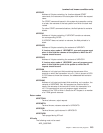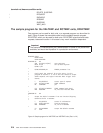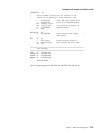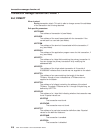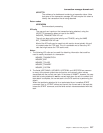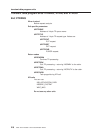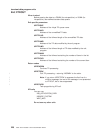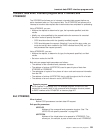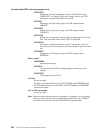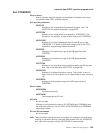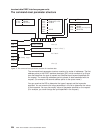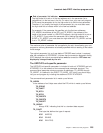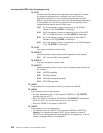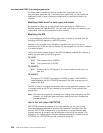
Transient data EXEC interface program exits XTDEREQ and
XTDEREQC
The XTDEREQ exit allows you to intercept a transient data request before any
action has been taken on it by transient data. The XTDEREQC exit allows you to
intercept a transient data request after transient data has completed its processing.
Using XTDEREQ, you can:
v Analyze the request to determine its type, the keywords specified, and their
values.
v Modify any value specified by the request before the command is executed.
v Set return codes to specify that either:
– CICS should continue with the (possibly modified) request.
– CICS should bypass the request. (Note that if you set this return code, you
must also set up return codes for the EXEC interface block (EIB), as if you
had processed the request yourself.)
Using XTDEREQC, you can:
v Analyze the request, to determine its type, the keywords specified, and their
values.
v Set return codes for the EIB.
Both exits are passed eight parameters as follows:
v The address of the command-level parameter structure
v The address of a token (UEPTDTOK) used to pass 4 bytes of data from
XTDEREQ to XTDEREQC
v The addresses of copies of four pieces of return code and resource information
from the EIB
v The address of a token (UEPTSTOK) that is valid throughout the life of a task
v The address of an exit recursion count (UEPRECUR).
Example program
CICS supplies—in hardcopy only—an example program, DFH$XTSE, that
shows how to modify fields in the command-level parameter structure passed
to EXEC interface exits. DFH$XTSE is listed on page 807.
Exit XTDEREQ
When invoked
Before CICS processes a transient data API request.
Exit-specific parameters
UEPCLPS
Address of the command-level parameter structure. See “The
UEPCLPS exit-specific parameter” on page 225.
UEPTDTOK
Address of the 4-byte token to be passed to XTDEREQC. This
allows you, for example, to pass a work area to exit XTDEREQC.
transient data EXEC interface program exits
Chapter 1. Global user exit programs 221



